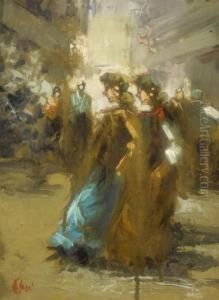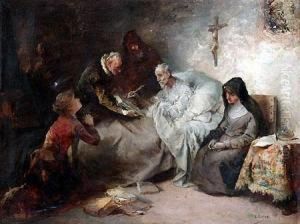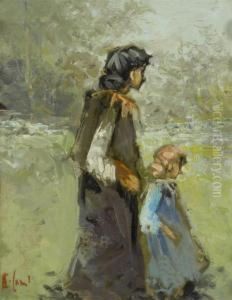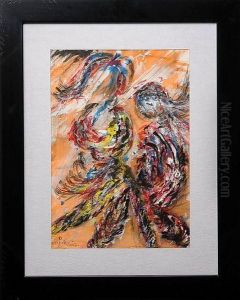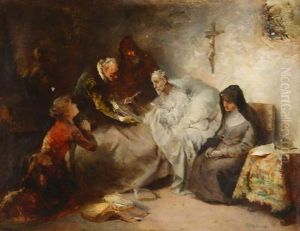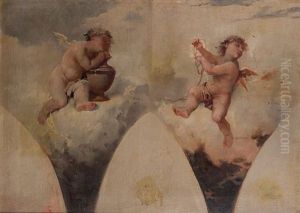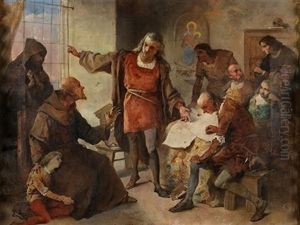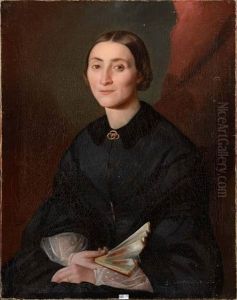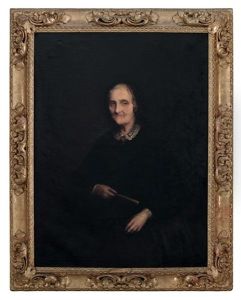Eduardo Cano De La Pena Paintings
Eduardo Cano de la Peña was born on February 28, 1823, in Seville, Spain, and is considered one of the prominent figures in 19th-century Spanish painting. His artistic journey began at the Seville Fine Arts Academy, where he was initially trained. His talent and dedication to his craft soon led him to further his studies in Madrid, at the Real Academia de Bellas Artes de San Fernando, where he honed his skills and deepened his artistic knowledge under the guidance of distinguished painters of the era.
Cano de la Peña's work is often categorized within the Romanticism movement, though he also delved into historical and religious subjects with a passionate and often dramatic approach. His ability to capture emotion and his meticulous attention to detail are evident in his paintings, which often feature scenes of historical significance, biblical narratives, and portrayals of Spanish life and culture. One of his most celebrated works is 'La Muerte de Lucrecia' (The Death of Lucretia), which exemplifies his mastery in conveying dramatic intensity and depth of emotion.
Throughout his career, Eduardo Cano de la Peña received numerous awards and accolades, further solidifying his status as a key figure in Spanish art. His contributions were not limited to painting alone; he was also an esteemed teacher at the Real Academia de Bellas Artes de San Fernando, where he influenced a new generation of artists with his techniques and artistic vision.
Cano de la Peña's legacy is preserved through his works, which continue to be admired for their emotional power and technical precision. His death on January 4, 1897, in Madrid, marked the end of an era for Spanish Romanticism, but his influence on the world of art remains undeniable. Today, his paintings can be found in major museums and collections around the world, serving as a testament to his enduring impact on the art history of Spain and beyond.
